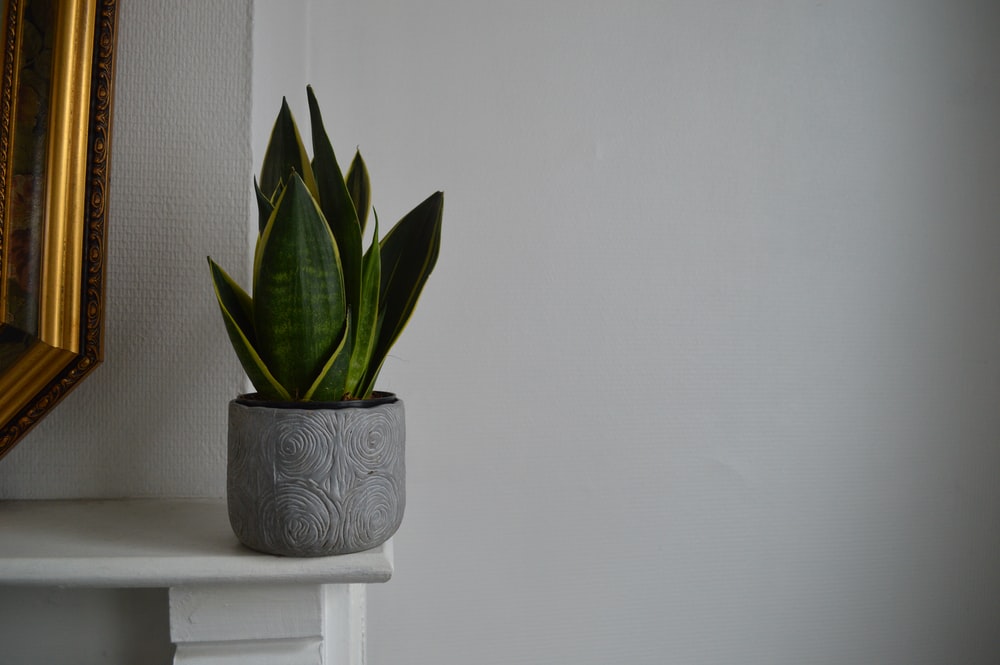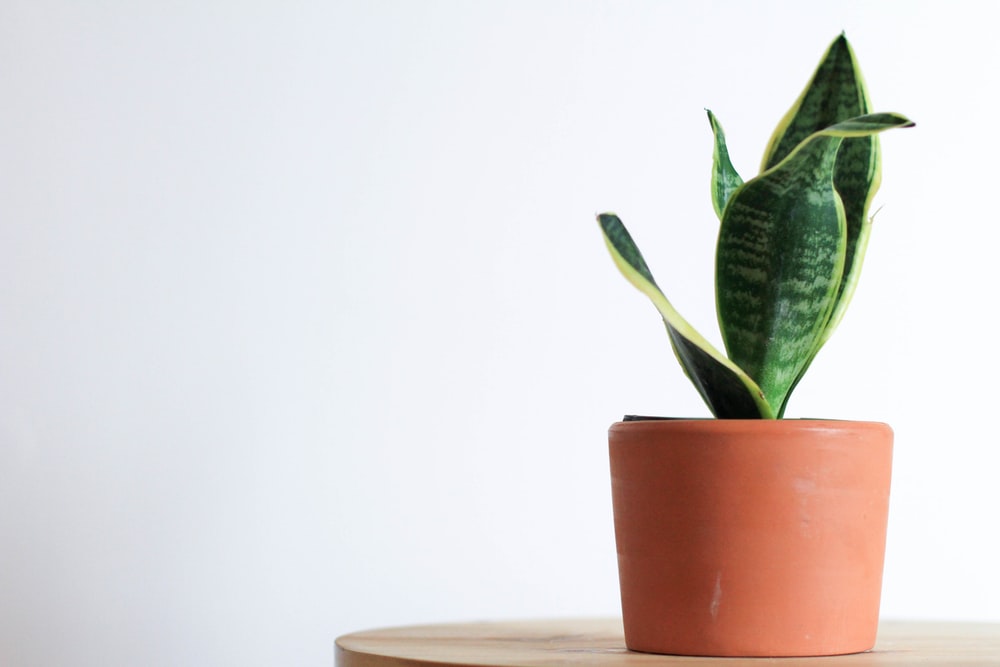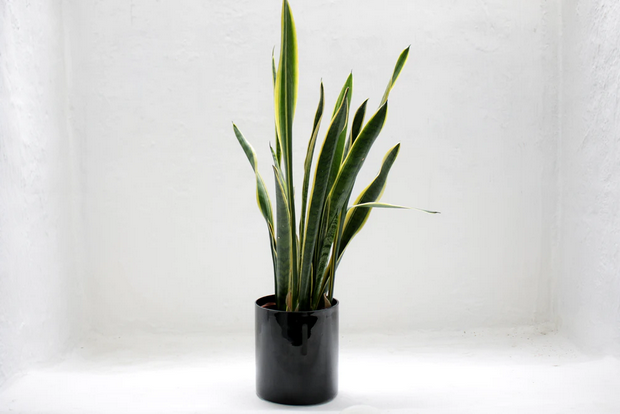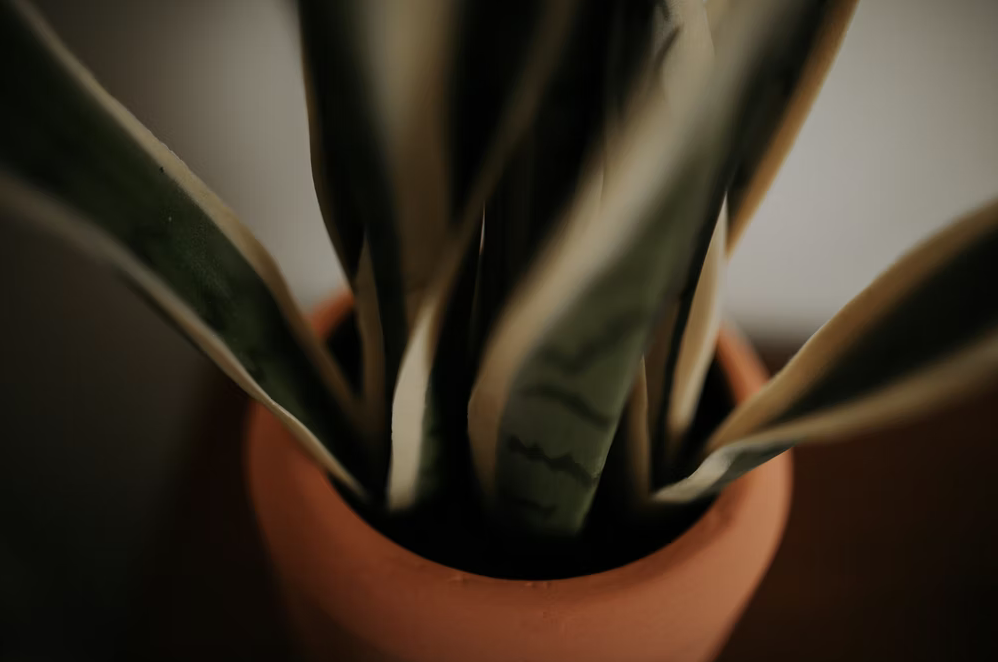Snake plants tend to be sturdy, and they can grow well in the right conditions. Most people believe that setting the snake plants in smaller pots will promote optimal growth, so they stay root bounded. However, how true is this statement?
Do snake plants like to be root bound?
Snake plants don’t like to be root bound, and they prefer smaller pots where the roots can hold the soil well. However, your plant will likely suffer if the roots have grown densely and displaced large soil amounts. Consider performing repotting procedures if the plant is root bounded.
Do Snake Plants Like to Be Root Bound – First Things First!

While snake plants might grow well in a specific pot, they might overgrow and require re-potting procedures. Setting a plant in a small pot will lead to poor growth and harm the plant’s health. The reason is that the plant’s roots won’t have sufficient room to develop or grow.
However, there is a technique you can use to determine when it’s right for you to perform re-potting procedures. If you are unsure of some of the methods you can use to address a root bounded snake plant, this guide should help.
Your snake plant should never be root bound because this can harm its growth. You should avoid setting any plants in small pots because it restricts their overall growth. Let us describe this in a much more straightforward way. When the plant has its roots in the ground, it has sufficient space to develop and grow. The plant will develop a solid root structure, which is vital for its growth over time.
Placing the plant in a small pot restricts its development and can lead to various negative growth issues. Below are some of the problems the plant will experience when it overgrows the current pot:
- The plant’s roots will displace the soil, thus producing a dense root ball in structure.
- The plant might run out of space which is vital for root expansion and development.
- The root pressure is likely to cause damage to the structure of the pot.
- The plant is likely to struggle in acquiring sufficient nutrients for growth.
- Disease might spread easily during times of infestations.
During this process, the plant won’t have sufficient water and nutrients. Since the soil also gets displaced, it eventually loses the ability to hold water and nutrients correctly. The plant won’t have the opportunity to absorb any of these products. The result is that the plant will be deprived of water and nutrients – all these combine to cause significant issues in your plant’s development. If you don’t act fast, the snake plant will die, and you will have to get another which can be a hassle.
Do Snake Plants Like Small Pots?

Snake plants have a shallow root structure, so you don’t have to use a deep pot. However, this doesn’t mean you can’t keep the snake plants in such a pot. The plant roots need sufficient space for development or face the risk of growing root-bound. Aside from that, most snake plants grow tall, so an irregularly sized pit will easily make the snake plant tip over. Therefore, ensure you choose the ideal pot size to suit the size of your snake plants.
How to Tell if a Snake Plant is Root Bound?
There are various ways you can tell if your snake plant is root bouned which can include:
- Be on the lookout for visible symptoms.
- Evaluate the structure of your plant by removing it from the pot.
Below is a brief description of both methods:
Visible Symptoms
Various visual signs show when your snake plant is root bounded, including:
- Plant dehydration.
- Lack of plant growth.
- Unusually dry soil conditions.
- Droopy leaves
- Poorly developed plants roots.
If you come across any of these signs and can’t find any major cause of the issue, then realise your snake plant is root-bound. Luckily, below is a step by step guide you can use to detect the problem:
- Set the container on its side.
- Gently remove the plant from the pot.
- Get a pair of scissors, and use them to dig up the soil to make it lose.
- Remove the plant from the soil after the loosening process.
- Once the plant is out, evaluate it for any of the visible symptoms we mentioned earlier.
If the root of the snake plant has tangles and takes up a large amount of space in the pot, then realise your snake plant is root-bound. The severity of the issue depends on the amount of damage that has occurred to the root ball of your plant.
How to Fix a Root Bound Snake Plant?

There are various techniques you can use to fix a root-bound snake plant, including:
- Re-pot the Snake Plant
- Divide the snake plant.
While repotting is the best solution, you can also opt to break it down so that it grows back up health. Doing this will allow you to re-pot the plant, and you can even set two plants simultaneously. However, be careful to help ensure your plant develops optimally during this process.
Steps in Repotting a Snake Plant
There are various steps involved in repotting a snake plant. When you change the position of your snake plant to a large pot, the snake plant will have more room for root development. The added space will also include fresh soil, which offers optimal water and nutrient for the plant. Below are some of the steps you can expect during this process:
- Pick a suitable container size.
- Place the plant in a sink or table. Next, lay the pot on its side.
- Try to remove the plant from the soil slowly.
- Once you remove the plant, get fresh soil and use it for the new snake plant.
- Evaluate the root for damage and fill the new container with fresh soil.
- Set your snake plant in the soil, and ensure it’s well-watered.
Dividing the Snake Plant
In some cases, breaking down the snake plant into two sections is the only suitable approach. It means that you will have two plants, and you can set them in pots of a similar size. The steps you should expect in this process include:
- Start by watering your snake plant correctly before the splitting day because it will help to loosen the soil.
- Remove the plant from the pot, and set it on a flat area.
- Get a pair of scissors, and cut the affected areas of the plant.
- Separate the roots carefully into equal halves, and set them in varying containers.
- Put the potting mix in the new container, and set your new plants in.
- Water the plant after the repotting process to help accustom it to the new environment.
When Is The Best Time To Re-pot a Snake Plant
The best time to re-pot a snake is after about 30 to 40 months. The reason is that snake plants have small root structures to last in a single pot for long durations. Avoid re-potting your plants regularly because roots take long durations to develop, which can harm plant development.
If you have plants that are root bound, consider taking them through the re-potting process. Ensure you do this ahead of time, during the summer or when the plants are still dormant in the winter.
Best Soil and Pot for Snake Plants

Choosing a suitable size pot for your snake plant is vital for its development. Avoid going for the large types because it can harm the plant’s overall development. A good school of thought is to always go for a large pot size. Doing this helps compensate for the additional space that your snake plants might need to develop.
Anything larger can be a problem because roots require time to develop. Since snake plants prefer dry soil, consider using terracotta or ceramic planters. Keep off plastic or metal planters because they don’t work well with snake plants. Amazon lists various containers that you can use for your snake plants. Providing a suitable soil mix is vital for the development of the plant.
Usually, snake plants require any type of soil that has excellent drainage. You will also need some compost and succulent soil mix to help create the perfect environment for the snake plants. The snake plants should provide sufficient water and nutrients that suit snake plants specifically.
Snake plants don’t like to be root bound, and you have to be careful of the process you use to provide optimal growth conditions. You might also have to consider regularly re-potting procedures regularily, and using the right mix of nutrients.
